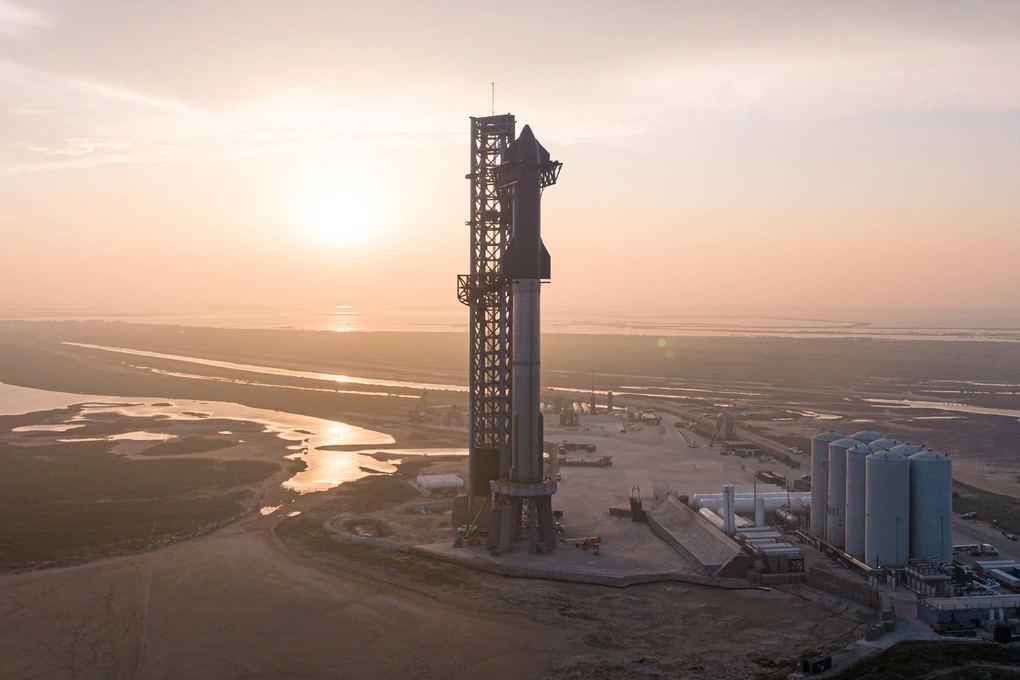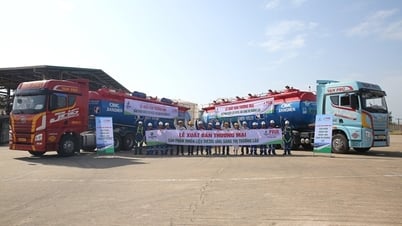SpaceX suffers serious problem: Starship upper stage explodes during test
Starship explodes and burns fiercely right on the test stand ( Video : NSF).
On the evening of June 18 (local time), a large explosion occurred at the Massey test site at SpaceX's Starbase launch complex in Texas (USA), during a static combustion test on the Starship spacecraft.
According to video recorded by NASASpaceflight.com, the explosion created a giant fireball that lit up the night sky, completely destroying the upper stage of the Starship Flight 10 prototype while it was still fixed on the test stand.
SpaceX confirmed the incident on June 19 in an official post on the X platform. The company said there were no injuries and that all safety procedures at the scene were activated. At the same time, SpaceX advised people to stay away from the area while technical staff investigated and resolved the consequences.
The incident comes just ahead of Starship's 10th test flight – a major milestone in the development of the most powerful space vehicle ever built.
The upper stage of this prototype is expected to be equipped with six Raptor engines and perform a simultaneous burn test, which is also the final step before flight.
Previously, on May 12, SpaceX successfully tested a single engine of the upper stage. However, when scaling up to test the entire engine cluster, an incident occurred.
Although the explosion occurred at the secondary test stand, not the main launch pad, the damage was severe. The incident not only caused equipment loss but also disrupted the process of evaluating the performance and technical improvements of the new Starship line.
Continuous failures: Still racing against technological limits?

The Starship launch system is still racing against the limit to complete the goal of sending humans to Mars by 2026 (Photo: SpaceX).
The Flight 10 incident was not an isolated incident, but rather followed a series of worrying failures in recent Starship test flights.
In 2025, the three most recent flights, Flight 7 (January), Flight 8 (March), Flight 9 (May) all encountered problems and failures at different levels.
On Flight 7, the upper deck (Ship 33) exploded about eight minutes after takeoff due to a liquid oxygen leak in the engineering compartment containing flight control and auxiliary electronics. The leak led to severe vibration and widespread fire, causing the system to activate a self-destruct mode.
Flight 8 later failed in a similar manner, with a serious malfunction noted in the engine compartment area just prior to the loss of control.
With Flight 9, the Starship (codename Ship 35) flew farther than any previous test flight, with a total duration of more than 46 minutes and reaching orbital altitude.
However, the vehicle lost control upon re-entry into the atmosphere, likely disintegrating due to a propellant leak leading to unstable pressure before exploding, and the debris is believed to have fallen to the bottom of the Indian Ocean.
While the upper stage continued its string of failures, the Super Heavy booster stage showed encouraging results. Notably, on flights like Flight 7 and Flight 8, the booster stage successfully returned to the launch pad and was secured by a mechanical arm system, a breakthrough in reuse technology.
However, SpaceX's entire philosophy of reusability can only succeed if both the booster and the top stage are operating reliably.
Starship is a rocket system that carries the long-term strategic ambition outlined by Elon Musk, which is to serve the Artemis program to bring people to the Moon, and further, to bring humanity to settle on Mars by the end of this decade.
However, the success rate of this plan is still very low. Elon Musk once said that the possibility of Starship reaching Mars by 2026 is "50/50". But with a series of consecutive failures like the current one, that belief may need to be adjusted.
Accepting failure in development is part of the “build–fail–iterate” philosophy that SpaceX pursues.
But with the growing scale and increasing risks of flights, SpaceX should probably consider gradually shifting to a less risky and more controlled experimental model if it wants to retain the trust of the scientific community and investors.
Source: https://dantri.com.vn/khoa-hoc/tau-starship-phat-no-boc-chay-du-doi-ngay-tren-be-thu-20250620075652252.htm







































































































Comment (0)